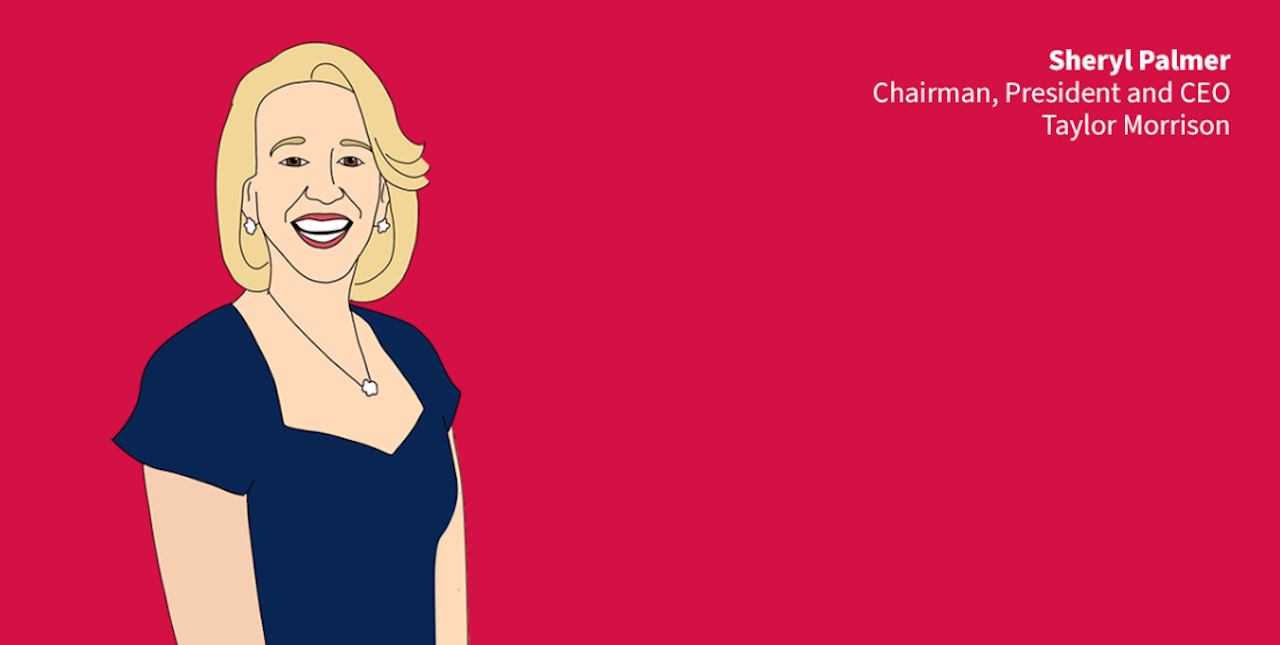Leadership
Another Monday In Builderland, With A Birthday To Celebrate
Homebuilder and their partner business teams put themselves in a position to pivot and play aggressively, rather than to simply concede to gravity and the headline risk cycle.

Demand is strong. Unambiguously so. And it's perked up and strengthening in more than a few isolated Southeastern and Texas markets, Taylor Morrison ceo, president and chair Sheryl Palmer tells on-air correspondents at CNBC today, as the Taylor Morrison team celebrates its 10th Anniversary since listing as a public company on the New York Stock Exchange.
- Cancellations have headed-back down to normal (with help from thoroughly scrubbed backlogs)
- Order pace has responded to deep concessions, allowing builders to ladder them back, and in some cases push price.
- Construction cycle times, still difficult to compress nicely back into pre-Covid-era start-to-completion cycles have shown marked improvement as new starts have slowed.
All of which is a big positive, given where so many of the community's leaders were thinking the business was heading before last late November. That's when a sudden fall in mortgage interest rates flashed a bright light on every pricing and incentives tool in the toolbox builders put in place to drive sales.
The convergence of lower rates, better deals, a new year, and a deep, deep stream of young adult households still feeding into the demand pool ignited a spark. That spark might have flickered and faded to whisps of smoke the next time interest rates retraced upward, but didn't.
Instead a little bit of momentum pushed directly up against another of the defining characteristics of today's market – which is that almost nobody with a good, moderate to low priced existing home wants to sell.
Yes, builders got lucky, but only in the sense that they had to be good to be lucky.
Now, with a strong Q1 under their belts, comes the next challenge, which is to sustain what they've got going in terms of absorption pace, completions and closings of their 2022 backlog, and the very hard work of building back profitability where they've had to part gross margin percentages to prime the pump of demand they're now modeling.
What comes next hinges on several unknowable variables:
- the path of mortgage interest rates
- the path of the economy and jobs
- the path of house prices
- the path of the Fed
- the path of consumer households
Factor in a backdrop of chronically stressed access to skilled frontline construction workers, a regional bank system that is flashing warnings of negative impact on both consumer and business credit access, global political turbulence, and a slew of weather events that are stronger and more frequent by the week.
What it adds up to, in this real work that homebuilders have learned to cope and adjust and course correct and adapt to and live with and navigate through, is just another Monday in homebuilder land.
Will it be a front-half-back-half year that front-loads more positive business performance through mid-year, and – if the economy begins to weaken and unemployment picks up -- falls off a cliff for the balance of 2023?
Builders and their partners are no strangers to Jekyll and Hyde years, and one of the big steps forward that builders of all stripes, sizes, and locations have made in the past 10 to 12 years has been in the business and financial professionalization of their firms. The more tangible evidence of this is financial – where far fewer, if any, companies went too far out in land, but rather began to de-risk their financial exposure even before the pandemic came in to change the world.
Less tangible, though, are the ways builders in so many cases, have improved their systems, their processes, including people, and data, and technology, in a way that has certainly impacted their ability to "size" themselves swiftly as they saw demand go south so fast in 2022, without losing capability to gut their way through a slow, rough patch.
Builders have gotten lucky on a couple of fronts. An interest rate 180 at the time it happened, and the practical non-existence of quality entry level existing home inventory have definitely occured as strokes of fortune they could only have hoped for.
At the same times, homebuilder and their partner business teams put themselves in a position to pivot and play aggressively, rather than to simply concede to gravity and the headline risk cycle.
Leaders of these businesses – while things are moving in the right direction at a better pace than most anyone would have projected – can take credit, with their teams, to be good enough to be lucky.
Congratulations to Team Taylor Morrison for shining bright as a strong, agile competitor, and a company culture the entire business community can look at as an example, for a decade as a national public homebuilder.
The next 10 years are now the challenge, and the team's accomplishments and success over the last 10 will make for a tough act to follow. What's clear is that the next six to 18 months will go some way to clarifying which enterprises will thrive in the next decade, which ones will only survive, and which ones won't do either.
MORE IN Leadership
10 Bold Ideas Tackling Housing Affordability And Access Now
From AI to hempcrete, these 10 ideas show how innovation in design, finance, and policy can open the door to housing affordability.
Sumitomo Forestry Sharpens U.S. Focus With DRB Move
Strategic clarity replaces portfolio sprawl as Sumitomo bets big on U.S. scale and integration.
Homebuilders and Insurance: A New-Reality Cost To Stay Ahead
Exclusive insights from Westwood Insurance Agency’s Alan Umaly and MSI’s Naimish Patel reveal why homebuilders must rethink insurance, resilience, and risk management—or risk losing buyers in an increasingly volatile market.
